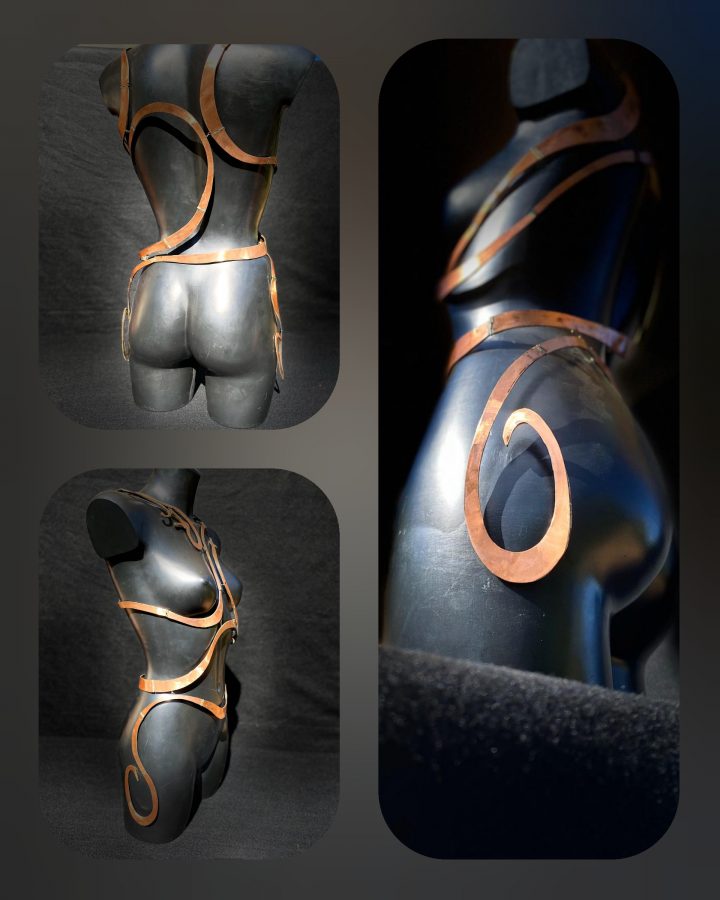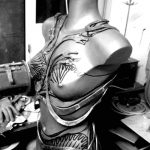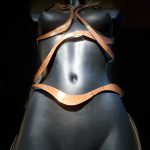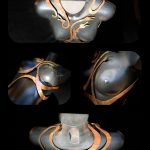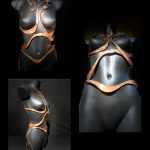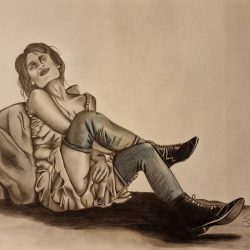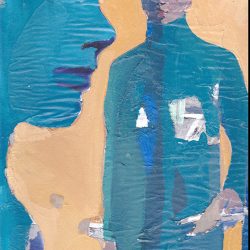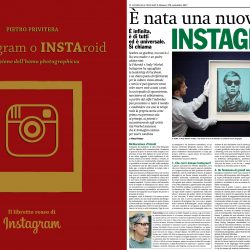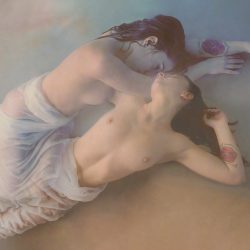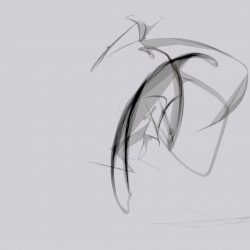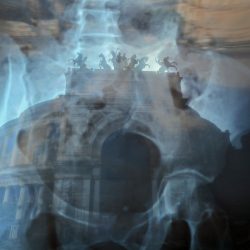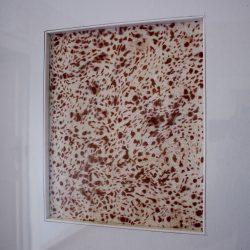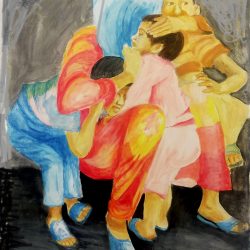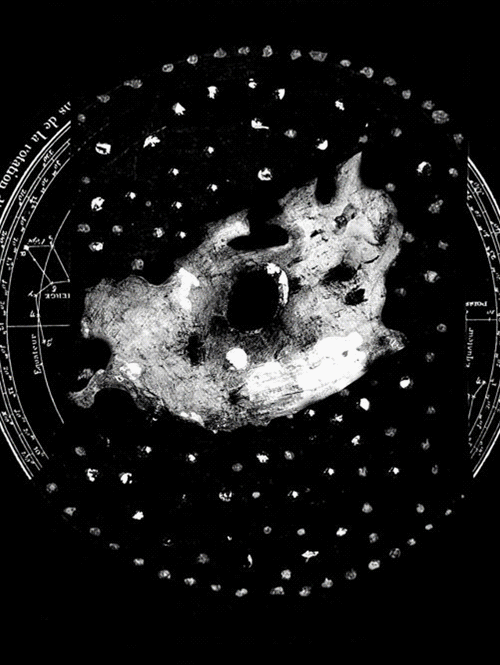work
Philia
| category | Other |
| subject | Human figure |
| tags | |
| base | 50 cm |
| height | 130 cm |
| depth | 20 cm |
| year | 2018 |
Philia (Eva's tears)
"Sometimes you simply follow what you hear, the name and the meaning of your creature, of your work, arrives when you see it in its entirety, and the material to which you have given shape and substance begins to tell you the things you did not know admit and confess to yourself. " GoldCaos
We could start by describing our work Philia, listing the many known and well-known snake symbologies, in reality we have taken note of it, but going one step further ...
The snake is the animal that most of all has stimulated the human imagination, of the various civilizations and peoples. In Egypt and Greece the snake was associated with time, embodying life and health, just think of the ouroboros. In the Judeo-Christian culture, the snake is treacherous and deceitful. The same symbolism is often applied in literary works at this fair.
We have never applied these associations during the creative phase and the realization of the work itself, rather, our posthumous considerations are not limited to one field only, we have passed from the etymology of the word snake, to the biblical analysis of the animal, evaluating everything also from an overall scientific profile, up to an observation of what the peoples were really able to glimpse in the figure of this scaly reptile so loved and hated at the same time.
In Philia the concept of sculpturality merges with the goldsmith's art, the sculpture that covers, embraces, surrounds, tightens, binds, by metaphor and in reality, as in other GoldCaos works, wants to instill reality and in part the possibility of wearing art, death that comes to life. Imperfections such as the poisons of life, the oxidizability of everything, the signs of aging, which is why the choice of material fell on copper, in a contradictory line to the clichés on snakes, we went back to Rudolf Steiner's anthroposophy, in which this specific material favors self-acceptance and the balance of emotions.
The art to heal from the absence of the knowledge of love ... if in part in the general analyzes the snake is seen as knowledge or evil, we have asked ourselves the question of human free will in this regard, the choice of suffering that we inflict on ourselves rejecting the purity of lofty concepts such as knowing our innermost human nature. Philia is perhaps our story of Eve, represented on a mannequin without head and without legs, immobilized by the world, for the thirst for knowledge, damned to the aesthetic judgment, the woman who can be, saint, whore, mother, but who in the common stereotypical thinking pays its bill while being immersed in a role.
The three heads of the snakes stand for the three faces of love of ancient Greece Eros, Agape and Philia.
Eros son of poverty according to mythology, the silent exchange between give and take, carnal greed, but also a sense of sensuality beyond the nakedness of a body. Spiritual love agape, which elevates man to the sublime close to or similar to God, one or more divine aspects surviving in the human being. Philia, pure love.
Art, like philosophy, thrives on perennial uncertainty, research, questions and curiosities of discovery, without ever losing the sense of wonder that belongs to pure souls, which we generally identify in children ... it is easy to standardize and classify manifestations love.
Our snakes have changed their skin and will continue to do so, contrary to what we think these reptiles in nature do not desquamate but are freed in one fell swoop from an epidermis that belongs to the old.
Philia represents for us a new skin love in art, which sublimates from the beginning, which becomes universal and disinterested love, love, which asks nothing in return, as Gibran says in the Prophet ... love is enough for love. The same love that could plunge us into a black vortex, if it stopped only at eros. Agape as in a gospel, love without ifs and buts. Philia is Eve's first tear, the tear of awareness, that the presence of love can give life and revive, as much as the absence of love can kill even when alive.
Best regards GoldCaos
Technique: creation of shapes in thin polymer, freehand bending of the metal, welding, manual cutting, creation of artisan hinges, reinforcement and thickening of the work with brass wire.
Materials: copper of 0.8cm, brass wire 0.2cm, black PVC bust mannequin.
"Sometimes you simply follow what you hear, the name and the meaning of your creature, of your work, arrives when you see it in its entirety, and the material to which you have given shape and substance begins to tell you the things you did not know admit and confess to yourself. " GoldCaos
We could start by describing our work Philia, listing the many known and well-known snake symbologies, in reality we have taken note of it, but going one step further ...
The snake is the animal that most of all has stimulated the human imagination, of the various civilizations and peoples. In Egypt and Greece the snake was associated with time, embodying life and health, just think of the ouroboros. In the Judeo-Christian culture, the snake is treacherous and deceitful. The same symbolism is often applied in literary works at this fair.
We have never applied these associations during the creative phase and the realization of the work itself, rather, our posthumous considerations are not limited to one field only, we have passed from the etymology of the word snake, to the biblical analysis of the animal, evaluating everything also from an overall scientific profile, up to an observation of what the peoples were really able to glimpse in the figure of this scaly reptile so loved and hated at the same time.
In Philia the concept of sculpturality merges with the goldsmith's art, the sculpture that covers, embraces, surrounds, tightens, binds, by metaphor and in reality, as in other GoldCaos works, wants to instill reality and in part the possibility of wearing art, death that comes to life. Imperfections such as the poisons of life, the oxidizability of everything, the signs of aging, which is why the choice of material fell on copper, in a contradictory line to the clichés on snakes, we went back to Rudolf Steiner's anthroposophy, in which this specific material favors self-acceptance and the balance of emotions.
The art to heal from the absence of the knowledge of love ... if in part in the general analyzes the snake is seen as knowledge or evil, we have asked ourselves the question of human free will in this regard, the choice of suffering that we inflict on ourselves rejecting the purity of lofty concepts such as knowing our innermost human nature. Philia is perhaps our story of Eve, represented on a mannequin without head and without legs, immobilized by the world, for the thirst for knowledge, damned to the aesthetic judgment, the woman who can be, saint, whore, mother, but who in the common stereotypical thinking pays its bill while being immersed in a role.
The three heads of the snakes stand for the three faces of love of ancient Greece Eros, Agape and Philia.
Eros son of poverty according to mythology, the silent exchange between give and take, carnal greed, but also a sense of sensuality beyond the nakedness of a body. Spiritual love agape, which elevates man to the sublime close to or similar to God, one or more divine aspects surviving in the human being. Philia, pure love.
Art, like philosophy, thrives on perennial uncertainty, research, questions and curiosities of discovery, without ever losing the sense of wonder that belongs to pure souls, which we generally identify in children ... it is easy to standardize and classify manifestations love.
Our snakes have changed their skin and will continue to do so, contrary to what we think these reptiles in nature do not desquamate but are freed in one fell swoop from an epidermis that belongs to the old.
Philia represents for us a new skin love in art, which sublimates from the beginning, which becomes universal and disinterested love, love, which asks nothing in return, as Gibran says in the Prophet ... love is enough for love. The same love that could plunge us into a black vortex, if it stopped only at eros. Agape as in a gospel, love without ifs and buts. Philia is Eve's first tear, the tear of awareness, that the presence of love can give life and revive, as much as the absence of love can kill even when alive.
Best regards GoldCaos
Technique: creation of shapes in thin polymer, freehand bending of the metal, welding, manual cutting, creation of artisan hinges, reinforcement and thickening of the work with brass wire.
Materials: copper of 0.8cm, brass wire 0.2cm, black PVC bust mannequin.



